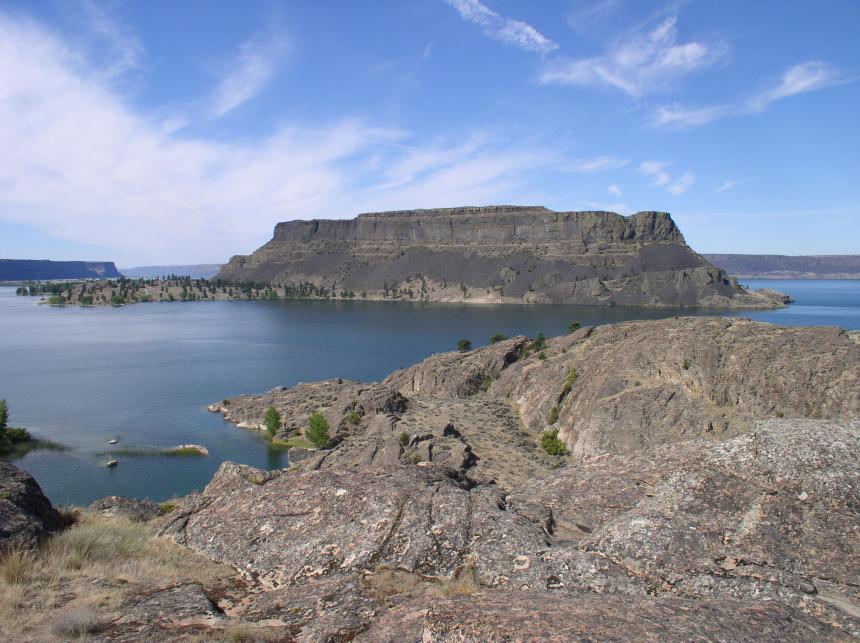Stretching almost 27 miles from Coulee City at the south to Electric City at the north, this large reservoir is very popular with anglers pursuing many species. Smallmouth Bass and Walleye are the most popular species. There is also a loyal following of anglers who fish for the reservoirs most numerous species, Lake Whitefish. Panfish, Rainbow Trout, and Kokanee can also be caught in Banks Lake. During most winters Banks Lake freezes over providing a popular ice fishery.
Banks Lake is one of the waters on which we conduct our annual Fall Walleye Index Netting (FWIN) surveys. The FWIN methodology was developed in Ontario, Canada as a means of monitoring a wide variety of biological parameters in Walleye populations in a standardized fashion using gill nets. Following an October 2022 netting survey, WDFW has released 2023 Banks Lake Walleye Fishing Prospects (PDF).
Banks Lake can be fished year-round and is a great vacation destination.
Two-pole fishing is allowed
Good for ice fishing
Shoreline access: Good - There are several places to fish along the easter shoreline of Banks Lake.
Species you might catch
- Black crappie
- Bluegill
- Burbot
- Channel catfish
- Common carp
- Kokanee
- Lake whitefish
- Largemouth bass
- Rainbow trout
- Smallmouth bass
- Walleye
- Yellow perch
Lake information
County: Grant
Acreage: 26888.30 ac.
Elevation: 1574 ft.
Center: 47.85385, -119.171805
Open in Google Maps
Catchable fish plants
| Stock Date | Species | Number Released | Number of Fish Per Pound | Facility |
|---|---|---|---|---|
Visit the Catchable Trout Plants page for a more detailed search of trout plants in this or other bodies of water. To view or download the source data for this table visit the WDFW Fish Plants dataset on the Washington State Open Data Portal
Fishing prospects calendar
Rainbow trout
Kokanee
Largemouth bass
Smallmouth bass
Walleye
Yellow perch
Black crappie
Bluegill
Channel catfish
Lake whitefish
Photos
